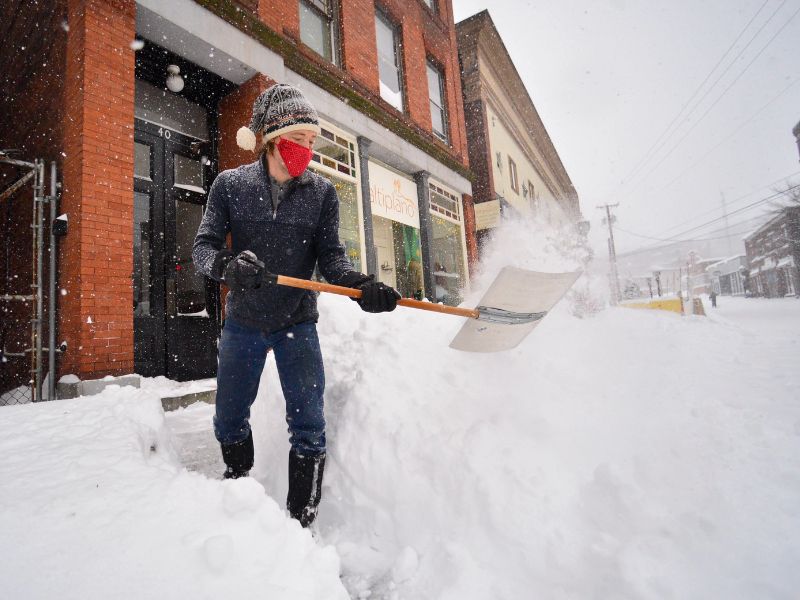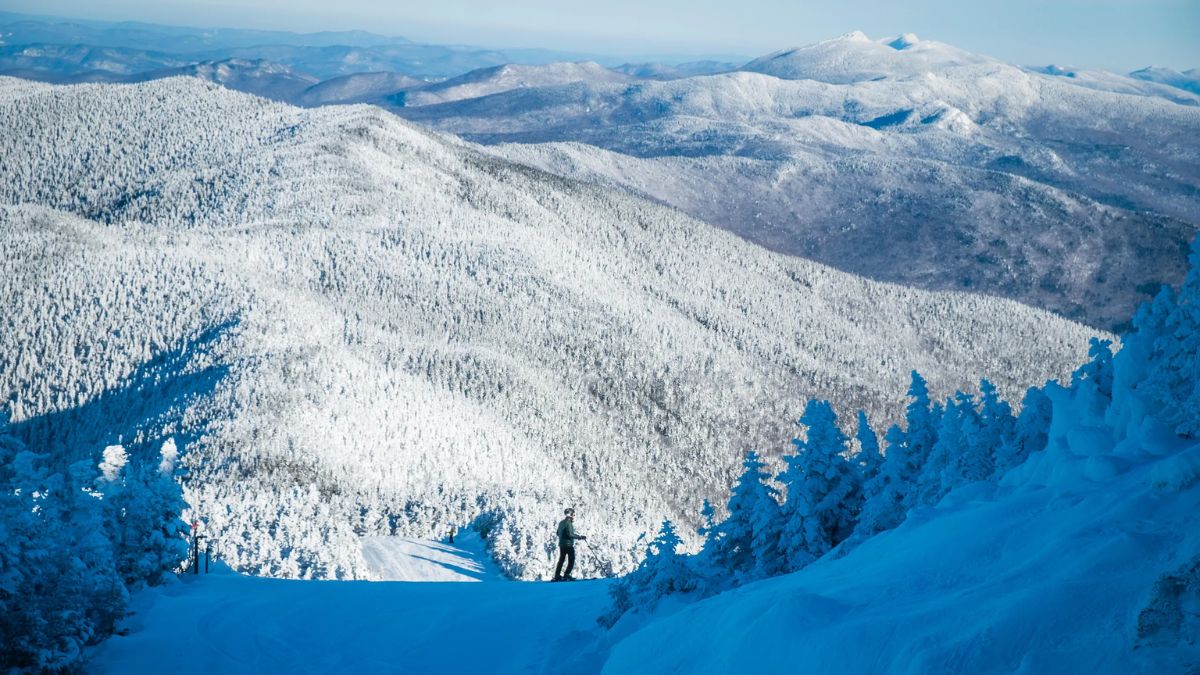Yes, Vermont does receive snowfall during the winter months. The state is known for its cold winters and picturesque landscapes covered in snow. On average, Vermont receives between 70 and 80 inches of snowfall each winter.
However, it’s important to note that snowfall amounts can vary depending on the specific location within the state. Higher elevations, such as the mountainous regions, tend to receive more snow compared to the lower-lying areas.
The mountainous areas in central and northern Vermont receive over 100 inches of snowfall annually. This abundance of snow makes Vermont a popular destination for winter sports enthusiasts, with numerous ski resorts and outdoor activities to enjoy amidst the snowy scenery.
Vermont is known for its picturesque landscapes, charming small towns, and outdoor recreational activities. One question that often comes to mind when thinking about Vermont is whether it receives significant snowfall.

In this article, we will explore the winter climate of Vermont and find out if snow is common in this beautiful state.
Location Overview
Located in the northeast of the United States, Vermont is bordered by New York to the west, Massachusetts to the south, New Hampshire to the east, and the Canadian province of Quebec to the north. Vermont is the second least populous state in the country, known for its small towns, rural landscapes, and natural beauty.
The state’s geography is characterized by rolling hills, valleys, and mountains, with the Green Mountains running centrally from the north to the south. Mount Mansfield, the highest peak in Vermont, is located in the Green Mountains and offers breathtaking views of the surrounding areas.
In addition to its natural beauty, Vermont is known for its charming small towns and historic villages. Burlington, the largest city in Vermont, is located on the shores of Lake Champlain and offers a vibrant cultural scene with art galleries, music venues, and a bustling downtown area.
Geography and Climate of Vermont
Vermont’s geography, with its mountains, valleys, and proximity to Lake Champlain, significantly influences snowfall patterns in the state. The mountainous regions, such as the Green Mountains, experience orographic lifting, causing air to cool and enhancing condensation and snowfall.
These areas, known as the Snow Belt, receive over 100 inches of snowfall annually. In contrast, valleys and lower-lying areas receive less snow due to the shielding effect of mountains. Lake Champlain can contribute to localized snowfall through lake effect snow when cold air interacts with the warmer lake waters.
Vermont experiences a continental climate, which means it has distinct seasons with varying weather patterns. Winters in Vermont are generally cold and snowy. The winter season typically lasts from December to February, but snowfall can occur as early as November and linger into March.
Historical Snowfall Record
Vermont has a rich history of snowfall records, reflecting the state’s reputation as a winter wonderland. While specific snowfall amounts can vary from year to year, the state has seen some notable historical snowfall events.
One of the most remarkable snowstorms in Vermont’s history occurred in March 1888, known as the “Great Blizzard of 1888.” This severe winter storm brought heavy snowfall, paralyzing the region and causing significant transportation and daily life disruptions. Snowfall totals from this storm reached up to 50 inches in some areas.
In recent history, Vermont experienced another notable snowfall event in February 2010. A series of winter storms affected the state, resulting in widespread heavy snowfall. Mount Mansfield, the highest peak in Vermont, received over 100 inches of snow during this period.
While specific historical snowfall records may not be readily available, Vermont’s winters are generally characterized by significant snowfall, particularly in the mountainous regions. The state’s climate and topography make it a popular destination for winter sports and outdoor activities.
Winter Season & Snowfall Pattern
- Average Snowfall in Vermont
Vermont is renowned for its snow-covered mountains and ski resorts. The state’s topography, with its rolling hills and the Green Mountains, contributes to the accumulation of snow. On average, Vermont receives between 70 and 80 inches of snowfall each winter.
However, snowfall amounts can vary depending on the specific location within the state. Higher elevations, such as the mountainous regions, tend to receive more snow compared to the lower-lying areas.
- Snow Belt of Vermont
The term “Snow Belt” is often associated with areas that receive consistent and substantial amounts of snowfall. In Vermont, the Snow Belt refers to the regions that receive the most significant snowfall during the winter months.
The mountainous areas in the central and northern parts of Vermont, including popular destinations like Stowe, Killington, and Jay Peak, are considered part of the Snow Belt. These areas can receive heavy snowfall each year, providing excellent conditions for winter activities.
Locations to Enjoy Snow
Vermont offers numerous locations where you can enjoy the beauty of snow and engage in various winter activities. Here are some notable destinations:
- Stowe
Known as the “Ski Capital of the East,” Stowe is a popular winter destination with world-class skiing and snowboarding opportunities. Its iconic mountain, Mount Mansfield, offers challenging slopes and breathtaking views.
- Killington
With its extensive trail network and diverse terrain, Killington is another premier skiing and snowboarding destination in Vermont. It is home to Killington Resort, one of the largest ski areas in the eastern United States.
- Jay Peak
Located in northern Vermont, Jay Peak is renowned for its abundant snowfall and challenging terrain. The resort features excellent skiing and snowboarding options, including glades and backcountry areas.
- Smugglers’ Notch
Smugglers’ Notch is a family-friendly destination that offers a range of winter activities for all ages. Besides skiing and snowboarding, visitors can enjoy cross-country skiing, snowshoeing, ice climbing, and snowmobiling. The resort provides a welcoming atmosphere with amenities catering to families.
- Bromley Mountain
Situated in southern Vermont, Bromley Mountain is a great option for both beginners and intermediate skiers. The resort offers picturesque views, a relaxed atmosphere, and a variety of terrain suitable for all skill levels. Bromley Mountain also features a terrain park for freestyle skiing or snowboarding.
- Stratton Mountain
Stratton Mountain is a popular destination for winter sports enthusiasts. Its ski resort offers a diverse range of trails, including groomed runs, glades, and terrain parks. Stratton Village provides a charming après-ski atmosphere with restaurants, shops, and entertainment options.
- Mount Snow
Located in the southern part of the state, Mount Snow is known for its family-friendly atmosphere and varied terrain. Mount Snow’s proximity to major metropolitan areas makes it easily accessible for day trips or weekend getaways.
Each destination offers its unique charm, scenic beauty, and a range of amenities to enhance your winter experience. Whether you are a seasoned skier, snowboarder, or simply looking to enjoy the snowy landscapes, Vermont has something to offer for everyone.
Conclusion
Vermont is no stranger to snow. With its cold winters and diverse topography, the state receives ample snowfall, particularly in the mountainous regions.
Whether you are a winter sports enthusiast or someone who enjoys the serenity of a snow-covered landscape, Vermont offers abundant opportunities to experience the magic of winter.
So, if you are planning a winter getaway or seeking an adventure in the snow, Vermont should definitely be on your list of destinations to consider.
